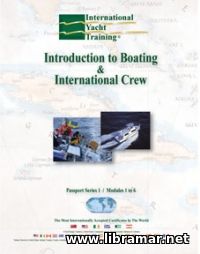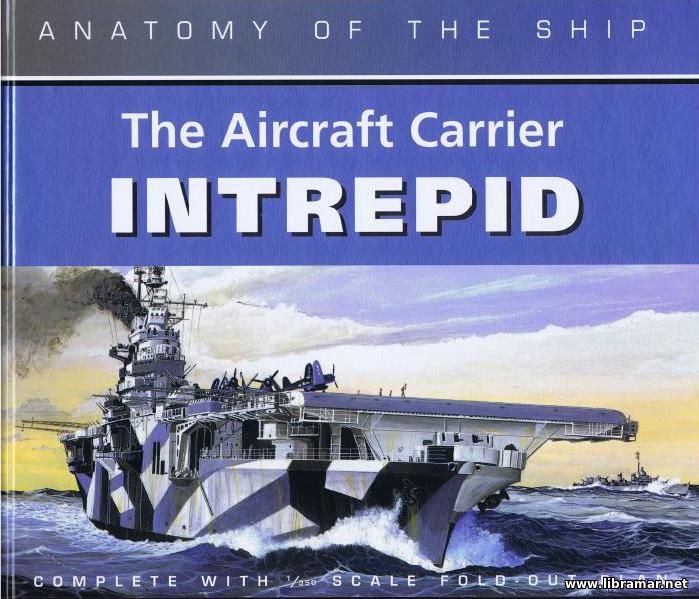Non-standard Ships
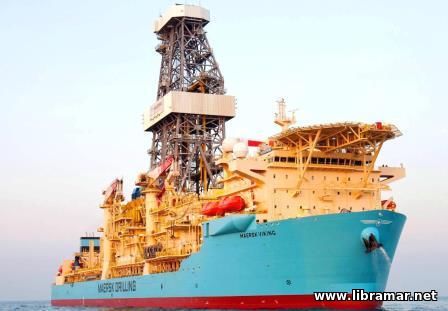
General
The most important area for load line improvement is that concerning the non-standard ship. Such ships might be treated casually by signatory nations but for two factors of great impact. The first factor is the legal realization that the International Load Line Convention, 1966 is the most widely applicable marine convention, since it requires a load line on every floating object with a horizontal dimension greater than 24 m unless it is a warship, fishing vessel or yacht. The second factor is the realization that the number and variety of ships which do not carry cargo in a weathertight interior have been increasing. Therefore, it is of some importance to outline these differences and explore those parts where new international agreement is needed most.
Let us examine those areas in which some of the new non-standard ships must be treated differently than the standard ship. First consider offshore drilling units. These can be subdivided into three general categories: Drillship, jack-up, and semi-submersible. The ship type fits the L/D, СB, and sheer of a standard ship but may not be fully maneuverable in a storm; therefore, sheer and bow height requirements are not utilized as contemplated by the Convention.
The jack-up type is a barge with limited stability while under tow and is also usually lacking in sheer and bow height. A semi-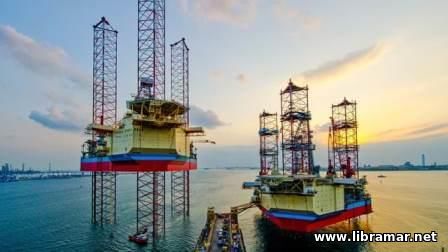 submersible has an L/D of no use in the strength evaluation, a very small СB so as to be transparent to waves, and no need for sheer nor bow height since normally the weather deck may be between 9 m and 30 m above the water whether under tow or drilling. Its loading capacity is often stability limited and it is essential for survival that no wave ever impact fully on the upper structure. While all of these types can be prepared for storms of various degrees of intensity, they are all dependent on advance weather warning for survival.
submersible has an L/D of no use in the strength evaluation, a very small СB so as to be transparent to waves, and no need for sheer nor bow height since normally the weather deck may be between 9 m and 30 m above the water whether under tow or drilling. Its loading capacity is often stability limited and it is essential for survival that no wave ever impact fully on the upper structure. While all of these types can be prepared for storms of various degrees of intensity, they are all dependent on advance weather warning for survival.
Surface-effect ships and hydrofoils need two separate evaluations as to their ability to weather a storm at sea. The first is in the waterborne mode and the second is in the out-of-water mode which involves high-speed interaction with waves and wind. In the latter mode, L/D, СB, sheer, etc., are essentially meaningless in the sense of the standard ship seakeeping evaluation assumed by Load Line Regulation.
High-speed planing hulls also defy the theory of sea-keeping in the sense of the standard ship, having a varying relation of Св and sheer to the seaway since their speed changes their displacement.
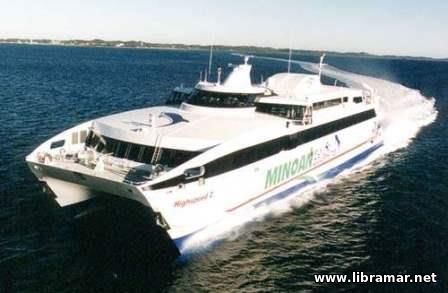 Catamarans and other multi-hull ships have no direct relation to Св, while ocean mining ships and pipe-laying barges are moored at a fixed heading allowing little opportunity to utilize bow height sheer effectively by turning into a storm sea.
Catamarans and other multi-hull ships have no direct relation to Св, while ocean mining ships and pipe-laying barges are moored at a fixed heading allowing little opportunity to utilize bow height sheer effectively by turning into a storm sea.
Semi-submersible ships are now being built for several different services, some of which envision submerging at sea; this, incidentally, being prohibited by the Load Line Convention. Their purpose is primarily for the carriage of continental shelf equipment, heavy industrial items, and other barges.
If these ever engage in submerged operations while at sea, they must be designed to certain limits in obvious contradiction of the Load Line Convention and the government of registry must report the design limits to IMCO.
Solution
Thus far, the solution to finding a proper load line for these non-standard ships has been a separate evaluation of each design in the proposed maximum seaway conditions by the designer himself. Since a pure textbook solution to many of these problems is not feasible, it often means a series of intricate and expensive model tests to determine within generalized limits the adequacy of the design and geometric parameters for safety at sea.
In order to find the best approach to overall safety at sea for each of these non-standard ships and at the same time retain the value of the Load Line Convention as a legally acceptable certificate of evaluation for seaworthiness around the world, there is a need for further international agreements. This can be accomplished as a series of special codes or as additional annexes to the Convention; however, it remains to be seen if the many different types of non-standard ships can be successfully generalized.
Generalizing the large numbers of non-standard ships may be done in a variety of ways. Legally, in order to retain for all vessels 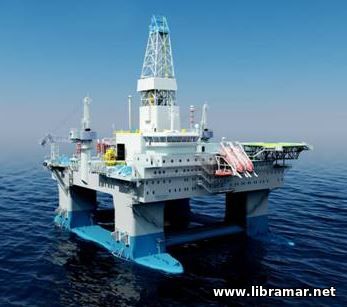 the general safety foundation established for ship-shaped hulls by the Convention, it may be necessary to drop the definition of international voyage now used and to substitute a definition which includes operation on and exposure to the sea anywhere in the world as both standard and non-standard ships have a need for the governmental protection offered by the Load Line Convention.
the general safety foundation established for ship-shaped hulls by the Convention, it may be necessary to drop the definition of international voyage now used and to substitute a definition which includes operation on and exposure to the sea anywhere in the world as both standard and non-standard ships have a need for the governmental protection offered by the Load Line Convention.
As a function of design, they may be categorized by differences in form, geometry, stability, and seakeeping limits. Regarding service, they may be categorized by type of cargo, length of voyage or area of operation. Finally, it is evident to the authors of this chapter that non-standard ships will be proliferating and will most certainly be operationally limited by the Administrations until research and development has progressed to a point where administrations can predict the effect of seaway operation on these ships and will therefore permit wider latitude in their use
The "Read Later" function allows you to add material to this block with just one click. Just click on the icon and read the articles that interest you at any convenient time.

